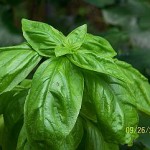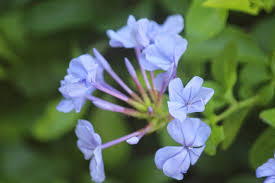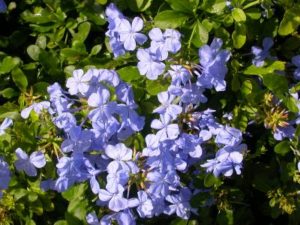I have a moringa tree growing in my back yard, mainly because the story I heard when I visited Echo a few years ago fascinated me. At the time, my oldest son was in dire condition with Crohn’s Disease and the tale they told sounded so much like a miracle that I just had to try it. If this tree could save the starving babies in Africa, why couldn’t it save my son, who was wasting away before my eyes?
Besides, I’m a great one for edible landscaping and the thought of being able to eat just about any part of this tree thrilled me.
| Also known as the Drumstick or Horseradish Tree, Moringa Oleifera is one of the world’s most useful plants. It’s cultivated in many 3rd world countries for its leaves, fruits, flowers and roots for a variety of medicinal and nutritional purposes. Its seeds are used for water purification, its roots can be grated and used as a horseradish substitute, its flowers are delicious dipped in batter and fried… and the immature seed pods make a tasty bean-like vegetable . Every bit of the moringa has a use. However, the leaves are most precious. According to the Trees for Life organization, gram for gram, Moringa leaves “contain 7 times the vitamin C in oranges plus 4 times the calcium in milk plus 4 times the vitamin A in carrots plus 2 times the protein in the milk plus 3 times the potassium in bananas.” Moringa leaves “could practically wipe out malnutrition on our planet.” Moringa is a sub-tropical tree. A mature tree can tolerate only very mild frosts; any frost at all will kill a young tree. Highly drought resistant, once established, although leaf production is severely reduced during times of drought. Can be difficult to transplant if the roots are disturbed. Grows up to 35 feet in height under favorable conditions. Zone 10. |
 |
My first moringa tree was grown in an Earth Box and it was doing quite well. I was adding the leaves to my salads and enjoying them until the time I decided to have a salad made with only moringa, no lettuce. Okay. There was a slight off-taste that I can’t quite describe but it wasn’t one that I liked. From then on, even the tiniest bit of moringa in my salad brought out that flavor. I gave the tree to my parents.
Then, when my son had lost so much weight due to his Crohn’s disease, I decided to try talking him into trying the leaves. Moringa has been shown to save African infants dying of starvation and malnutrition, when they are so far gone that they can’t even keep food down when it’s given to them. Why not try this with my son, to see if his damaged digestive system could handle the leaves or even tea made from them?
So, I bought another small tree and planted it in an Earth Box, too. At the time, my back yard flooded with every hard summer rain, sometimes staying flooded for a week or more before the water drained away. I didn’t want to take a chance on planting it in the ground and losing it.
This tree was much prettier than the first one and the leaves totally lacked that off-taste I had grown to hate earlier. I was munching on the leaves as I worked outside, as well as adding them to my salads. My son was essentially laughing at me and my ideas, even as he wasted away before my eyes.
Then came Hurricane Charley. The entire top was broken off my moringa tree, leaving me with a 4 foot, naked pole with a shattered top. I sawed off the jagged edge, down to where I could get a smooth cut, and then waited, hoping for the best.
The tree was never happy after that. It put out a new branch but it seemed as though the leaves died as fast as they formed.
In the meantime, since we lost so many big shade trees, I gave my son 3 little moringa sprouts, each just a few inches tall. These things grow FAST so I figured they might provide some shade faster than other trees. He didn’t have to eat them… but they would be available.
Well, he neglected those poor little things pitifully, for months. Eventually he got around to building a series of raised beds for a garden. He planted one little moringa tree (about a foot tall now) into the center of each bed. His reasoning was that they would provide some light shade for his garden, to help block the hot summer sun, and the falling leaves would provide food for the garden as a natural mulch.
He called me about a week later and asked if I could come to his house to look at the trees. He was practically in shock that they had grown nearly 6 inches in a week. So I went to look at them and it was truly amazing. You could almost see them grow now that they had room to spread their roots. I plucked a leaf and munched on it, just to see if he had the good tasting varieties. He looked at me as though I was weird but he humored me when I suggested he taste just one leaf. He had the good-tasting variety.
Not long after that, he had another severe attack with his illness and out of desperation, he tried my suggestion and ate some leaves, all the while swearing he wouldn’t be able to keep them down. Amazingly, he not only kept them down but within a few days’ of eating the leaves regularly, he felt better.
My son kept on eating a handful of moringa leaves every day and one day appeared on my doorstep, offering to help me with the brick patio I had decided to build. He had some color in his face and certainly more energy than I’d seen in a very long time.
Suffice it to say that he is still eating moringa every day… and has increased his “forest” to nearly a dozen trees.
Leaf production drops drastically in the dry months so his answer was to plant more trees. He has gained a substantial amount of weight and is now back to work full time. He hasn’t had an attack of Crohn’s for over a year now.
Neither of us is medically trained in any way. We’re just former full-time farmers who still enjoy getting our hands dirty in a garden and who believe in the power of whole foods, grown organically. My son’s doctors have no explanation for his current state of health but one of them told him “Whatever you’re doing, continue doing it because it’s working wonders for you!”. He has been off all pain medication for over a year now and for the first time in his life, he has joined the rest of
us in worrying about gaining too much weight.
Is the moringa truly a “miracle tree”? We believe it is. And an awful lot of formerly starving people in Africa and other third world countries agree with us.





